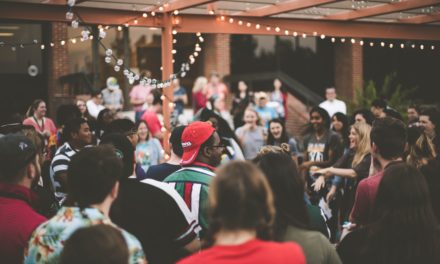“They Shall Not Grow Old” is a documentary about the sacrifice and valor of British troops in Belgium during the events of the Great War. The director of this film, Peter Jackson, known for his works in the Lord of the Rings, and the Hobbit, pays homage to these troops including his own Grandfather who participated in World War I.
Jackson was approached by 14-18 NOW, the UK’s arts program for the First World War centenary, and Imperial War Museum, in association with BBC, in 2015 for the project. The Imperial War Museum provided Jackson and his crew with over 600 hours of interviews and 100 hours of original footage. Much of the footage was recorded before 1910, where audio and video weren’t synchronized and much of the film was damaged due to age and other means. Jackson and his crew took it upon themselves to restore, recolor, and edit this footage through many modern production techniques to better tell the story from a soldier’s point of view.
Jackson and the crew stated that they spent the first year of production watching and reviewing all the film received from the Imperial War Museum. He decided to not use standard narration in the film due to the overwhelming number of interviews that were kept telling the story better from a soldier’s point of view. Many of the interviews recounted memories from the soldiers’ service, but it was vague enough to not list any specific locations.
“Jackson stated: “We made a decision not to identify the soldiers as the film happened. There were so many of them that names would be popping up on the screen every time a voice appeared. In a way it became an anonymous and agnostic film. We also edited out any references to dates and places, because I didn’t want the movie to be about this day here or that day there. There’s hundreds of books about all that stuff. I wanted the film to be a human experience and be agnostic in that way. […] I didn’t want individual stories about individuals. I wanted it to be what it ended up being: 120 men telling a single story. Which is: what was it like to be a British soldier on the western front?(https://en.wikipedia.org/wiki/They_Shall_Not_Grow_Old)”
The footage at the time was captured through a camera that must be cranked, causing variation in speeds when it was played back. As Jackson and the crew reviewed this footage, they watched it closely to find out the amount of frames the footage was captured with. Next, the film was either overexposed due to too much light, or underexposed due to the lack thereof as well as grainy due to the quality of the film and interference from the location. After the production crew managed to identify the issues, they were able to restore the film to impressive quality outside of the coloration, which was covered later with some research pertaining to the uniforms and other objects, and with some pictures taken of the locations that Jackson traveled for reference in colorizing the landscape.

After film repair, After exposure and noise correction, After recolor.
With the lack of captured audio, Jackson had to find similar sounds, and voices to fill the void. The crew traveled to different locations to capture sounds of moving tanks and artillery to even the sound of boots making their way through the muddy landscape. The audio of the soldiers themselves in the footage was analyzed by expert lip readers and then spoken by English voice actors to fill in that facet of the film. Jackson commented that film was only briefly seen outside of photographs that required the person to remain incredibly still. So many of the shots of their gatherings and reactions were surprisingly honest.
Jackson himself had many resources from the first World War collected already, one of them being old magazines that depicted scenes from the various battles due to the lack of pictures and film as well as an opportunity for propaganda for the nation. He also had several old uniforms that were used as resources in recoloring in the film, along with the Imperial War Museum’s records with various units that took part in this conflict.
Overall, this film was phenomenal. The film began as your typical documentary, starting with the black and white footage with the speakers detailing their recruitment as well as the state of their home before the war began. After a solid twenty-five minutes or so, many of the audience were having similar thoughts of when this recolored footage was going to appear, and we quickly had our answer as it was shifted into color and the sounds of the marching and artillery could be heard clearly. The film continued now with the vibrant footage and sounds, adding another layer of depth to it as the speakers continued to speak about daily life all the way through until their return home. After the film, Jackson did give us a thirty-minute look into the techniques and research done to produce this project which was quite amazing to see put into action. If you can watch this film, please take some time to view it, you will not be disappointed in the slightest!
About the Author
Corum Byers
Student - Spring 2019
I’m a Bachelor’s Student at Gulf Coast State College within the Digital Media – Digital Development field. My passions include writing, gaming, story-boarding, and developing ideas for my future film series.






